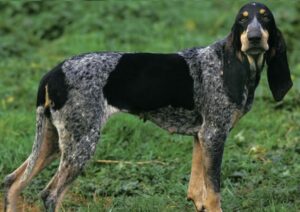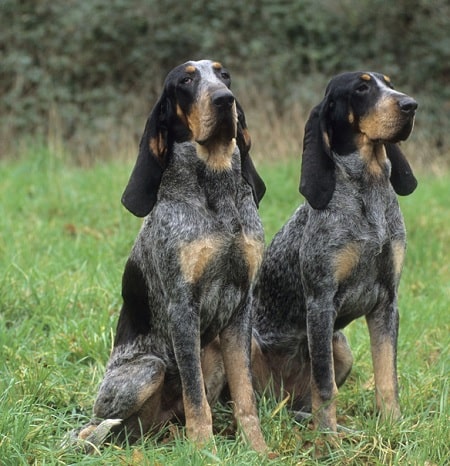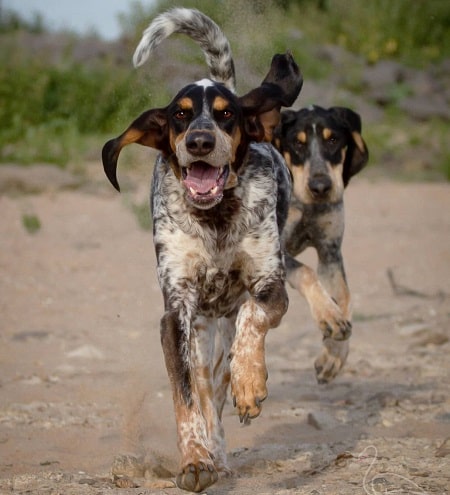Grand Bleu de Gascognes are scenthound dogs that hunt in groups. The Grand Bleu de Gascogne has a strong body, a head with noble features and a neck that is muscular. For daily activity, the athletic scent dog needs to be in a house that is fenced or a backyard large enough. They also don’t require special care to maintain their coats.
Their excellent sense of smell is well-known. Grand Bleu de Gascogne uses their stamina and communication through deep howls to attract animals they find. With dedicated owners, these breeds excel in all scent-based competitions and sports.

Origins and History
In France, the Grand Bleu de Gascogne has existed since Medieval Times. In the 11th century, when Norman Conquest took place, these French hounds and other French dogs arrived in England. In the United States, their numbers increased faster than France in the 18th century. In the old days, they hunted deer, boars, and wolves.
They were also imported to the UK for crossbreeding. However, until mid-1980s they were not bred to any registered Kennel Club dogs or other breeds. They are still a very uncommon breed in UK. Their numbers began to decline as the number wolves decreased. Grand Bleu de Gascogne were expensive dogs, therefore, noblemen switched them over to save money.
Behavior Traits Of Grand Bleu de Gascogne
Grand Bleu de Gascogne are loyal and intelligent dogs that have a strong sense of smell. They do not run fast but they can be very alert. When meeting a new person, they can be aloof but very friendly when with friends. They prefer to be outdoors and are not suitable for the average home with pets. They may take some time to adapt to a family because they’re not treated like domestic dogs. Their household behaviour is totally dependent on the way they are raised. It goes without saying that these breeds do not suit first-time owner as they require an experienced owner.

Trainability
Even though the Grand Bleu de Gascogne breed is intelligent, it’s not easy to train. Independent breeds of dogs were developed as working animals. Add in training for scent tracking and treats between sessions. They don’t want to entertain you or enjoy the training just for themselves. Further, the achievement of these dogs is that they learn to have good habits and not bad. These breeds are determined and require a lot of work to train them. Socialization with your family and pets is essential.

Is Grand Bleu de Gascogne Child-friendly?
Grand Bleu De Gascogne are friendly towards children due to their calm and pleasant nature. The large breed slowly matures with age, and as a pup they are excited to play with the kids. They must be supervised at all ages to prevent them from hurting each other. You should teach your kids and pet to socialize and get along as they may pisses each other. Kids might grab their ears or tails, while your pet may become aggressive.
Health Concerns
BloatIt occurs when fluid or gas twists inside the stomach. This condition can occur without symptoms, so you should be cautious about what your dog is eating. Your dog should be fed a nutritious and balanced food. When your dog bloats, you should take it to the veterinarian for an examination.
FACTS
- In 1785, during the War of Independence, Lafayette, a French nobleman gave Gorge Washington seven Grand Bleu de Gascogne.
- The dog that gave birth later to the 15 puppies was one of seven.
- In America, there are many more Grand Bleu de Gascogneare than in France.
You can also Size
| Weight: | 32-35kg |
| Height: | For males it is between 64 and 70cm, while for females the range is 60 to 65cm |
Similar Breed As Grand Bleu de Gascogne
- Basset Bleu de Gascogne
- Basset Hound
- Basset Fauve de Bretagne